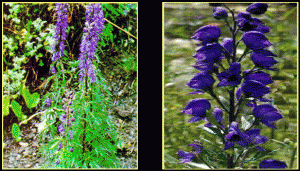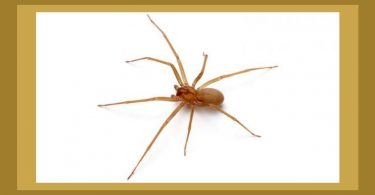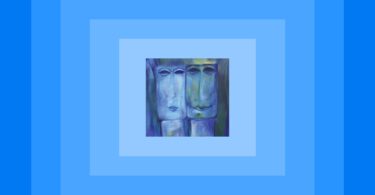“Look deep into nature, and then you will understand everything better.”
– Albert Einstein
The natural world enclosing us is segregated into organic, having life, relating to plant and animal kingdoms or inorganic, lifeless relating to elements, salts and compounds that belong to the mineral kingdom. In this article, I will discuss the Homeopathic alliance to Mother Nature. Homeopathy is a branch of natural medicine based on the hypothesis of nature, “Like cures like”, meaning that a disease can be cured by a substance that can cause similar symptoms in a healthy individual. These disease mimicking components when formulated in singularly small and diluted doses, can trigger recuperation, prevent a disease and conserve wellness. Homeopathic remedies are safe, natural, non addictive, with no side effects.
All reversible functional problems can be helped by this approach. The constitutional approach of homeopathy studies the mental, emotional and physical attributes of the patient during the process of determining the appropriate remedy for any person. In homeopathy there is remedial compatibility between nature and maladies in living beings. Since each person is different, so is their remedy, and a well matched remedy can strengthen their vital force and bring them back into balance. Homeopathic remedies are obtained from animate and inanimate genesis of nature like plants, animals and minerals. Each homeopathic remedy has a distinct portrait based on more than 200 years of research, study and practice. In the U.S. the remedies are FDA approved and recorded in the Homeopathic Pharmacopeia after being proven on healthy human beings.
Homeopathy and its relationship to the Plant Kingdom
The remedies used in homeopathy are mostly obtained from flowering plants, although some conifers, ferns, fungi are also used. The raw plant material is dissolved in an alcohol and water mix, and stored in a dark place to prevent light from changing its chemical properties. Alcohol is used as a preservative so the plant material does not disintegrate. When ready, this mixture which is saturated with the chemical properties of the original plant is strained. This new solution is called Homeopathic Mother Tincture. This tincture is further diluted, potentized in alcohol or distilled water to make an effective remedy. Naturally toxic plants can be safely used as homeopathic remedies. They are so diluted that the final remedy product is totally without any poisonous traces, rendering them safe to use by any age group including infants, without any side effects.
Plants show sensitivity and acclimatize to environmental changes like sunlight, oxygen, being indoors or outdoors. They flourish but cannot move from place to place by themselves. There is considerable overlap in the different kingdoms and the descriptions of the characteristics are greatly simplified here for the sake of illustration. Having said that, individuals who need plant remedies are very sensitive, emotional, passive, changeable, submissive, adaptive to others and their life situations. Just as plants need regular sunshine, water and healthy soil to survive, these individuals need constant support and nurturing from their loved ones. They are very artistic and love nature, often wear flowery clothes. Certain plants disperse into their surrounding space. Similarly people having these plant characteristics are scattered and spread around in their thoughts, actions, speech, emotions, etc. Most of their ailments are usually a consequence of some physical or emotional shock. This is just a general review of how homeopathy relates to the plant kingdom. A detailed study of the plant kingdom is required to make the homeopathic connection with human characteristics.
Some common Homeopathic Plant remedies are:
Aconite: This remedy is made from Monkshood. This plant grows in damp areas, has clusters of hood-like dark blue flowers with purple sepals. This hood gives an appearance as if the plant is masked or concealing a deadly secret. This remedy is very crucial in any homeopathic emergency or first aid kit. It is an acute short acting remedy indicated when the patient has sustained, and never recovered from a major shock, fear, for sudden illnesses, colds, cough, flu, fever with chills, sore throat, eye inflammation, physical and mental restlessness. Symptoms are worse in a warm room, evening, night, lying on affected side, from music, from tobacco smoke, dry cold winds and better in open air.
- Agaricus Muscarius: This remedy is made from a fungus, Bug Agaric, which contains a toxin Muscarin. In crude form this plant acts as an intoxicant to the brain, producing dizziness, trembling, irrational behavior, low reflexes similar to alcohol. When used in potentized homeopathic form, it is an excellent remedy for Parkinson’s disease, alcoholism, symptoms of cerebral excitement like jerking, trembling, delirium etc. These patients are easily stimulated, their speech is unclear, gait is not balanced, are depressed, try to injure themselves. Symptoms are worse from open cold air, after eating, before a thunderstorm, and better from moving slowly.
- Arnica: This remedy is made from flowers of the plant Arnica Montana, also known as Mountain Daisy. This plant contains a toxin Helenalin, which if ingested in crude form causes internal bleeding. It is a pain remedy and is indicated for mental or physical trauma, swelling associated with bruises, sprains, in hemorrhages, after abortion, post operatively. It can also be used as a local application on unbroken skin for insect bites, bruises, chapped lips. This is an excellent jet-lag remedy for travelers, as it relieves stiffness from long distance travels. Symptoms are worse from least touch, motion, rest, wine, damp cold and better from lying down or keeping head low.
- Belladonna: The word “Belladonna” is derived from Italian, and means “beautiful woman”, because in olden days, this plant was used in eye drops by women to dilate their pupils, as it gave them a sexy look. This remedy is made from Atropa Belladonna, the Deadly nightshade. This plant blossoms near refuse, waste areas, or near manure heaps. In shady places it can grow as tall as 6 feet, but if exposed to sun it remains weak, short and becomes more poisonous, as sunlight increases the concentration of the alkaloid toxin it contains. This remedy is indicated for sunstroke, any ailment that evolves suddenly, inflammation, any part that feels red, hot, swollen, high fever, tonsillitis, hot flushes, etc. This remedy is suited to individuals who are seductive and good looking. Symptoms are worse from touch, movement, noise, bright light, lying down in the afternoon and better from sitting up, standing, hard pressure.
- Cinchona Officinalis: This remedy is made from Peruvian Bark, which contains alkaloids, having healing properties, like the antimalarial Quinine and antiarrhythmic Quinidine. It is indicated in malaria, parasitic infestation, spasmodic pains, fever, exhaustion, Insomnia, digestive disorders, headache. It is suited to individuals who are artistic, idealistic, imaginative, paranoid, have difficulty in expressing their emotions, enjoy meaningful chats. Symptoms are worse every other day, from slightest touch, draft of air, at night, after eating, bending over, and better from bending double, hard pressure, open air and warmth.
- Colocynthis: This remedy is made from the dried and deseeded fruit known as Bitter apple or Bitter cucumber. If consumed in crude form, it can induce abortion or be used as a laxative. Homeopathically, it is indicated for bowel issues, colic, diarrhea, menstrual problems. It is suited to individuals who are reserved in nature, dislike contradiction, get angry very easily, have clarity of thoughts on right versus wrong, believe that they are always right. Symptoms are worse from anger, resentment and better by doubling up, hard pressure, warmth, lying with head bent forward.
- Drosera Rotundifolia: This remedy is made from the entire fresh flowering plant known as Drosera or Sundew, an insectivorous plant. Its leaves have multiple hairs which excrete a sticky fluid to attract insects, that get trapped and absorbed by the plant’s digestive enzymes. This engulfing nature is seen in patients who would benefit from this remedy. It is indicated in consumptive diseases like Tuberculosis, violent barking or whooping cough, growing pains in children, restlessness, anxiety. It is suited to individuals who are headstrong, get angry if bothered, feel as if they are being harassed. Symptoms are worse after midnight, lying down, on getting warm in bed, drinking, singing, laughing.
- Staphysagria: This remedy is made from the seeds of the herb Delphinium or Lice bane. It is used in killing body lice. It is suited to weak individuals with suppressed anger, emotions, bitterness, who are mild, submissive, unable to It is an ideal remedy for those who have undergone childhood abuse, have a dominant spouse, or have been mistreated. They are prone to sexual fantasies, urinary tract infections and styes in their eyes. Symptoms are worse after an afternoon nap, least touch on affected parts, from sexual excesses, tobacco, grief, anger and better after breakfast, from warmth, rest at night.
All the above Homeopathic remedies are mentioned only to create awareness about the effectiveness and association of homeopathic remedies to natural substances. The medicinal properties of these natural substances is extracted and prepared homeopathically and the final dilutions contain no traces of the actual harmful or poisonous substance. They should not be tried in crude form.
Trying to suppress or erase symptoms on the physical level undoubtedly is very important, but there’s more to healing than that. Dealing with psychological, emotional and spiritual issues involved in treating any physical ailment is equally important. “Giving a person a remedy that matches their symptoms and personality traits, encourages the body to activate its own power to heal.” Hence, consider the natural and holistic approach of homeopathy for all your ailments and remember that nature is your great restorer.
Stay tuned for a continuation of this article about the homeopathic relationship to the animal and mineral kingdoms.
Note: Part II will appear in March and Part III in April 2015.






I agree with Albert Einstein the nature is fantastic /Gun Sweden
very good article